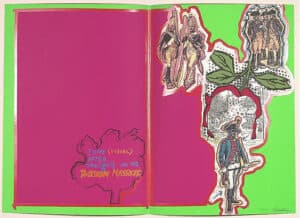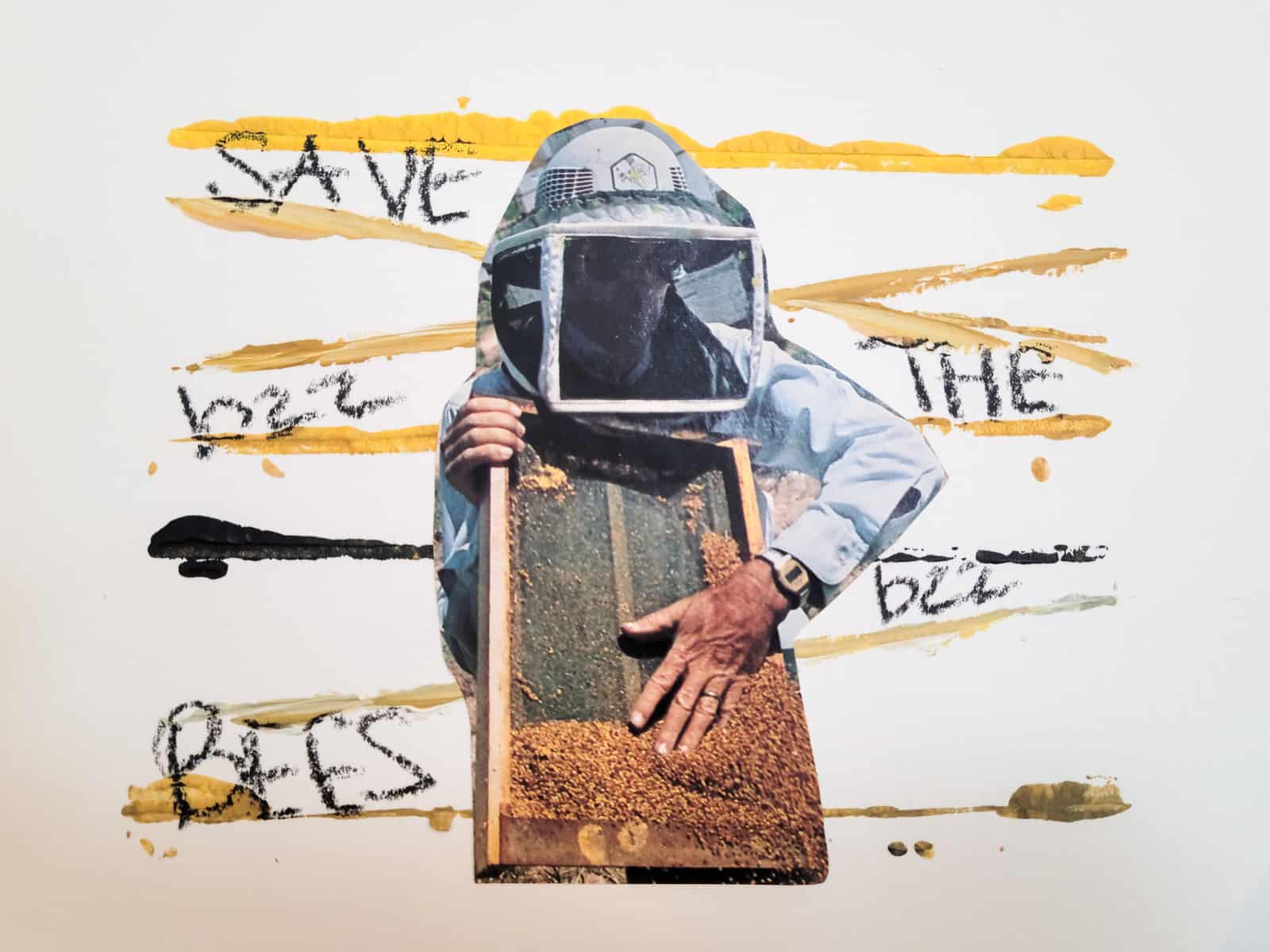
Larry Rivers (American, 1932-2002) Some (Visual) Afterthoughts on the Boston Massacre from the series Boston Massacre, 1970, Screen print, offset print, collage. Gift of William A. Graham IV, 1979. (1979.55.3)
Use rubber bands to create your own powerful print piece. Artists often use their art to confront timely political and social issues. The exhibition Prints and Protest, 1960-1970 includes examples of several prints with powerful messages. In his work Some (Visual) Afterthoughts on the Boston Massacre, Larry Rivers used bright colors like pink, red, and green along with words to catch your eye and bring attention to his message.
Supplies Needed:
- Cardboard
- Washable paint
- Paintbrushes or rollers
- Collage Paper (Newspapers, Magazines, Construction Paper)
- White watercolor paper or drawing paper
- Scissors
- Glue
- Texture Tools (Stamps, Foam Rollers, Texture Brushes)
Steps to Make Your Print:
 Gather materials. Select magazine clippings or pictures of your choice.
Gather materials. Select magazine clippings or pictures of your choice.- Choose a piece of cardboard smaller than the size of your paper. Wrap as many rubber bands as you’d like by sliding them on the end of the cardboard. Avoid overlapping a thick layer of rubber bands.
- Cover your rubber band wrapped cardboard in washable paint- any pattern or design.
- Stamp the finished painted cardboard down onto the white paper, smear the bands or dab it on the paper to create a printed background.
- While the paint is drying on your paper, glue down your collage materials around your print to create a design or image.
- While your paint dries, glue your final images onto your print, write out phrases or words and add more shapes with paint or stamps.
Share Your Art on Social Media!
Tag @atownartmuseum & #AAMatHome.

